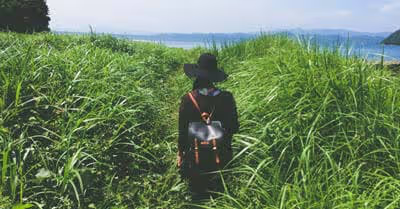Table of Contents
What determines a good hiking pace?
If you want to get the most out of the hiking trip, you should understand what a typical pace looks like, and what you can do to push the limits. While a good hiking pace will depend on your fitness level, each path is different. Here are some variables to keep in mind.
Terrain
The mountains, hills, and natural curve of the terrain will affect your pace. Most of us start slowing down when moving uphill, not to mention you need the stamina and balance on a downhill stretch. Also, each step downhill will put pressure on the knees, hip joints, and ankles to maintain a secure footing. With these variations in mind, you will notice some fluctuations in your hiking pace. If you're unburdened on flat terrain, you should expect to cover 3 miles per hour.
Trail conditions
While most hiking locations will have a clear path, this is not always the case. Some will have foliage, so you need to be careful when moving downhill. Other trails will have rocks, upturned roots, and other obstacles that may prevent you from achieving full pace. What about the river crossings? Even if a river can be shallow, it can be `rock hopped'. At times, you may get stuck if there's no one to guide you.
What if it rains and there're mud holes to negotiate? How about walking on an unstable surface like gravel, sand, or pebbles? You must put all these things into consideration when calculating the pace.
Weight carried
A simple day hike will require that you carry a few valuables but if you plan to camp, you have to carry more personal effects. For a multi-day backpacking adventure, you'll have a lot of weight on your back. If you want to increase your pace, you should keep your backpack as light as possible.
An experienced hiker will tell you that you should not attempt to carry a load that is more than 20-30% of your body weight. Of course, you can adjust according to your fitness level. The way you park the load also matters. If the backpack is off the balance, you may not be able to maintain a certain pace. Also, a backpack that doesn't fit well will cause you to move slowly and gingerly. If you want to maintain the recommended 2-4 miles per hour, you should keep the heaviest items close to your back.
How well do you understand the path?
If you've been on a specific trail a dozen times, you'll increase your pace. However, if it's your first time, you need a lot of work to understand the terrain. The more familiar you are on a particular trail, the higher the pace.
Body fitness
Because hiking is a great aerobic activity, it requires some level of fitness. Think about it - a 150-pound person can burn about 400 calories while hiking. However, an out-of-shape hiker will struggle to conquer the trail. This means that taking frequent breaks affects the average pace.
Are you using trekking poles?
If you're traveling on a slippery surface, trekking poles can help you maintain a certain pace. Also, they allow you to work harder while remaining comfortable. And if you're hiking downhill, the poles will ensure you maintain a higher pace.
How can you increase hiking speed?
If you're a hiking enthusiast, there're many things you can do to increase your hiking speed. While building your strength can be a good starting point, you should work to improve your overall fitness. Those who want to reach the highest limit will try to cover 25 miles per day. Here are a few tips to follow.
Practice
Just like any other sport, you need a lot of practice to reach the pace you want. To keep your body at tip-top shape, you should try to hike for a long distance. If you're just getting started, you can start by walking around your neighborhood.
Choose the right hiking gear
Trekking poles are the most important hiking gear. They help to distribute the weight of your backpack to the body. This will not only save the joints but also improves endurance. And believe it or not, your pace will be lower if you have unhealthy joints. Another important gear that helps to boost your pace is low-profile hiking shoes with a strong sole. Of course, the shoe will protect your feet from rock and pebbles.
Don't push too hard
Pushing too hard will make you walk at an uncomfortable pace. Those who try to cover too much within a short period tend to give up very fast. The best approach is to time yourself on a trail and then improve the pace gradually. Why not start with baby steps? Taking small steps guarantees a quicker overall pace.
Pay attention to what you carry
If you want to boost your pace, you should make your backpack light. Whenever possible, you should carry only what is necessary. If you're backpacking for a couple of days, you may need a GPS, food, water, tent, sleeping bag, and more. But because some of these things are non-negotiable, be sure to make lighter choices.
Strengthen your core
While working on cardio will help improve the overall pace, you should also strengthen your core. More specifically, you should engage in activities like swimming.
How do I choose the right hiking pace?
Not everyone will maintain the pace of 2MPH a day - but there's no shame in that. While this may seem like a fantastic starting point for hikers, it may not seem ideal for someone who wants to push the limits. But on the other end of the spectrum, you should learn how to reach those hiking levels. A general rule of thumb when choosing the right pace is not to compare with others. Because we all have different fitness levels, you should choose something that works for you.
Final thoughts
Your hiking pace will determine whether you reach your goals or not. Those who hike regularly can cover an average of 2-3 miles per hour - including breaks. With all the above variables in mind, you can reach about 12-18 miles a day.
Recent Articles
















